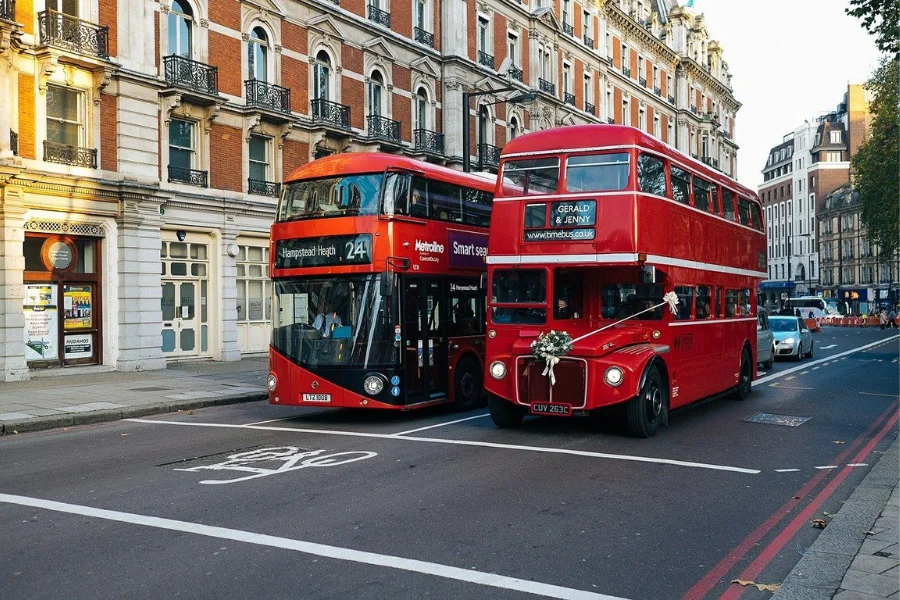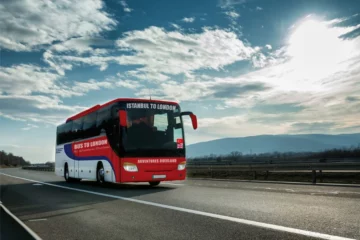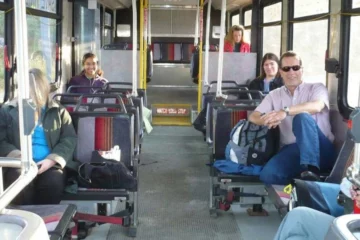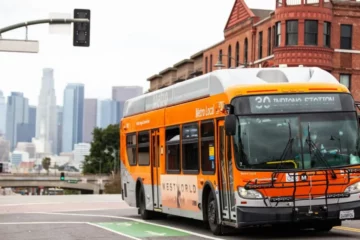The Evolution of Buses: From Horse-Drawn Carriages to Electric Vehicles

Evolution of Buses | Bebevy
For centuries, buses have been an integral part of transportation systems all over the world. From the horse-drawn carriages of the 1800s to the cutting-edge electric vehicles of today, buses have undergone a remarkable evolution. As cities grew, so did the need for reliable and efficient public transportation. The early days of buses were marked by slow and uncomfortable rides, but they quickly became more sophisticated with the introduction of mechanical engines and improved suspension systems. Over the years, buses have continued to evolve, with advancements in technology leading to the development of hybrid and electric buses that are both eco-friendly and cost-effective. Today, buses play a vital role in urban transportation systems, providing millions of people with a safe, reliable, and affordable way to get around. Join us as we explore the fascinating history of buses and how they have evolved over time.
The beginning of buses: horse-drawn carriages
The history of buses dates back to the 1820s when horse-drawn omnibuses were introduced in London. These omnibuses were essentially large carriages that could carry multiple passengers at once. They were initially used for short-distance travel within cities, but as the concept gained popularity, they started to be used for inter-city travel as well. The horse-drawn omnibuses were not very comfortable, and the rides were bumpy and slow. However, they were a significant improvement over the previous modes of transportation, which were either on foot or by horseback.
The horse-drawn omnibuses quickly spread to other cities across Europe and North America. In the United States, stagecoaches were used for long-distance travel, while horse-drawn trolley cars were used for local transportation. The trolley cars were more comfortable than the omnibuses, but they were still slow and required a lot of maintenance. As the demand for better public transportation grew, engineers started looking for ways to improve the existing models.
In the late 1800s, steam-powered buses were introduced, which were faster and more efficient than the horse-drawn carriages. However, they were still not very practical, as they required a lot of maintenance and were expensive to operate. It wasn’t until the early 1900s that motorized buses were developed, which marked the beginning of a new era in bus transportation.
The rise of motorized buses
The first motorized buses were developed in France in the early 1900s. They were powered by gasoline engines and could carry up to 20 passengers. The new buses were much faster and more reliable than the horse-drawn carriages, and they quickly gained popularity in Europe and North America. The motorized buses were more comfortable than their predecessors, with better suspension systems and more spacious interiors.
As the demand for motorized buses grew, engineers started experimenting with different designs. In the 1920s, double-decker buses were introduced in London, which could carry more passengers than the standard single-decker buses. The new design was a huge success, and double-decker buses are still in use in many parts of the world.
During the 1930s and 1940s, advancements in engine technology led to the development of more powerful and efficient buses. The diesel engine, in particular, was a game-changer, as it was more fuel-efficient than gasoline engines and required less maintenance. The diesel engine also allowed for the development of larger buses that could carry more passengers over longer distances.
The impact of World War II on bus technology
The Second World War had a significant impact on bus technology. During the war, many buses were repurposed for military use, and the production of new buses was limited. However, the war also led to several important innovations in bus technology.
One of the most significant developments was the introduction of the articulated bus. Articulated buses are made up of two sections that are connected by a pivot joint, which allows for greater maneuverability and flexibility on the road. The first articulated bus was developed in Switzerland in the 1940s, and the design quickly spread to other parts of Europe and North America.
Another innovation that emerged during the war was the use of compressed natural gas (CNG) as a fuel source for buses. CNG was used in Germany to power buses during the war when gasoline and diesel were in short supply. After the war, CNG emerged as a viable alternative to traditional fuels, as it was cheaper and more environmentally friendly.
The advent of electric buses
The use of electric buses dates back to the early 1900s, when trolleybuses were introduced in several cities across Europe and North America. Trolleybuses are powered by overhead electric wires, which supply electricity to the motor. The trolleybuses were quiet, fast, and efficient, but they were limited in their range, as they could only operate within the range of the overhead wires.
In recent years, electric buses have become more popular, thanks to advancements in battery technology. Electric buses are powered by rechargeable batteries, which allow them to operate without the need for overhead wires. The batteries are charged overnight, and the buses can operate for up to 200 miles on a single charge. Electric buses are also much quieter than traditional buses, which makes them ideal for use in urban areas.
Benefits of electric buses
Electric buses offer several benefits over traditional buses. First and foremost, they are much more environmentally friendly, as they produce zero emissions. This is particularly important in urban areas, where air pollution is a significant problem. Electric buses also offer significant cost savings over the long term, as they are cheaper to operate and maintain than traditional buses. They are also much quieter than traditional buses, which makes them ideal for use in residential areas.
Another benefit of electric buses is that they can be integrated with renewable energy sources, such as solar and wind power. This means that they can be powered by clean energy, which further reduces their carbon footprint.
Challenges of replacing traditional buses with electric vehicles
While electric buses offer several benefits over traditional buses, there are also some challenges associated with their adoption. One of the biggest challenges is the upfront cost, as electric buses are more expensive than traditional buses. However, this cost can be offset over the long term, as electric buses are cheaper to operate and maintain.
Another challenge is the range of the buses. While electric buses can operate for up to 200 miles on a single charge, this range may not be enough for some routes. However, this can be addressed by installing charging stations along the route, which allow the buses to recharge during their journey.
Finally, there is a need for more investment in charging infrastructure and battery technology. As more cities adopt electric buses, there will be a need for more charging stations, which will require significant investment. There is also a need for more research and development in battery technology, which will help to improve the range and performance of electric buses.
Future of bus technology
The future of bus technology looks bright, with continued advancements in battery technology, engine efficiency, and design. Electric buses are likely to become more common in urban areas, as cities look to reduce their carbon footprint and improve air quality. There is also a growing trend towards autonomous buses, which can operate without a driver, reducing the cost of operation and improving safety.
The development of new materials, such as carbon fiber, is also likely to have a significant impact on bus design. Carbon fiber is lightweight and strong, which makes it ideal for use in buses. It also has the potential to reduce the weight of buses, which will improve their efficiency and reduce their carbon footprint.
Examples of cities leading the way in electric buses
Several cities around the world are leading the way in the adoption of electric buses. In China, the city of Shenzhen has replaced its entire fleet of 16,000 buses with electric vehicles, making it the largest electric bus fleet in the world. In Europe, the city of Amsterdam has committed to replacing all diesel buses with electric buses by 2025. In the United States, several cities, including Los Angeles and Seattle, have also committed to transitioning to electric buses.
Conclusion: The future of bus transportation
In conclusion, the evolution of buses from horse-drawn carriages to electric vehicles has been remarkable. Buses have played a vital role in urban transportation systems for centuries, providing millions of people with a safe, reliable, and affordable way to get around. While there are still challenges associated with the adoption of electric buses, their benefits outweigh the costs. As more cities adopt electric buses, we can look forward to a future where public transportation is more efficient, more environmentally friendly, and more affordable.








